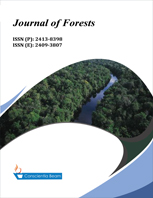Global perspectives on forest fire protection and biodiversity conservation strategies in the agricultural circular economy
DOI:
https://doi.org/10.18488/jof.v12i1.4142Abstract
Combining engineering and ecological protection offers a viable solution to prevent forest fires caused by land-use changes. The agricultural circular economy enhances sustainability by integrating ecological functions with services, fostering a balance between human intervention and natural processes. While non-intervention strategies are often favored for biodiversity preservation, this study highlights the critical role of wildfires—both naturally occurring and prescribed—in shaping resilient forest ecosystems. Through a comprehensive scoping review, this research explores the intricate relationship between forest wildfire protection and biodiversity conservation strategies, synthesizing diverse scholarly perspectives and methodologies. The agricultural circular economy leverages organic farming, diversified plant systems, and the reclamation of abandoned agricultural land to mitigate fire risks. This approach prioritizes societal vitality and sustainability by addressing uncertain risks, poor management, and fair carbon pricing. Utilizing bioproducts and agricultural biomass waste fosters connected ecological loops and enhances global land-use strategies. Integrating scientific insights with Indigenous fire stewardship emerges as a transformative strategy for promoting biodiversity conservation amidst the climate crisis. This study underscores the need to re-evaluate fire management practices and incorporate the agricultural circular economy into international policies to ensure sustainable and resilient forest ecosystems. Governments are urged to enforce these strategies effectively for environmental and societal benefits.

